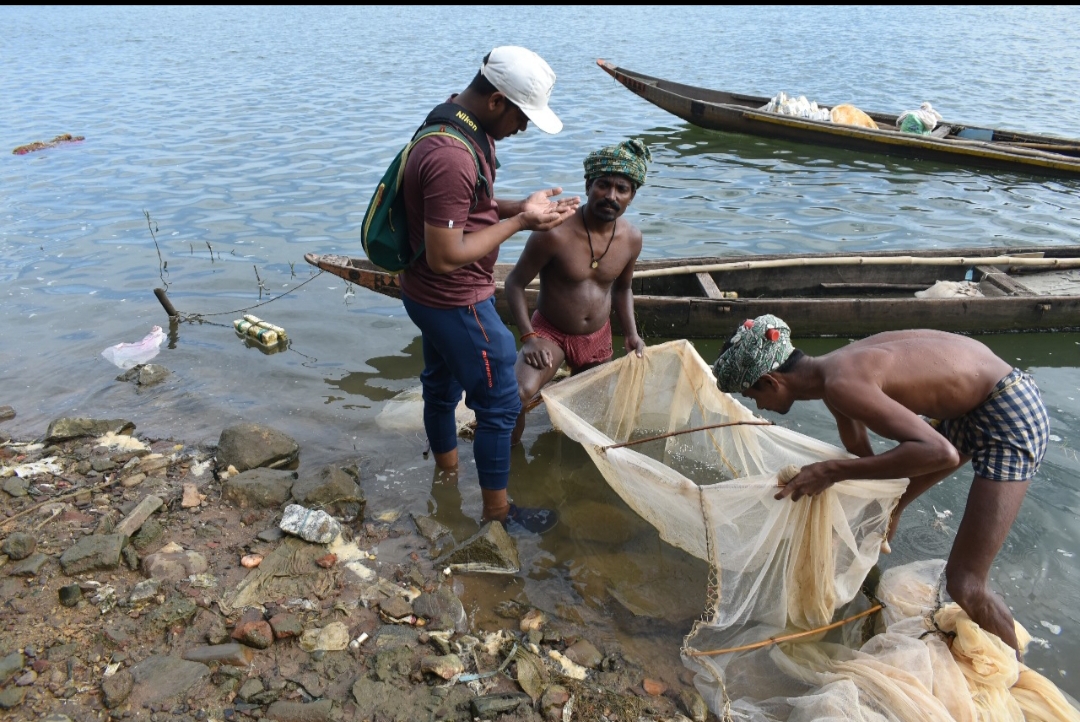Subarnapur, 1/11: The combined efforts of faculty, researchers and scientist of P. G. Department of Zoology, Berhampur University, Odisha, and Estuarine Biology Regional Centre, Zoological Survey of India, Gopalpur-on-Sea, Odisha have let to the discovery of a new species of freshwater goby of the genus Awaous from Mahanadi River having a vibrant yellow coloured body with a fleshy upper lip. The new species belong to the family Oxudercidae and named as Awaous motla. This discovery is an addition to the genus after nearly three decades. The new species is named “motla” after the local name of this fish from where the specimens were collected.
During the study of the freshwater fish components of the middle stretch of Mahanadi River, this species was collected near Sonepur, Subarnapur district, and also from the same river near Boudh bridge, Boudh district of Odisha, India. The team was led by Dr. Jaya Kishor Seth, Assistant Professor of P. G. Department of Zoology, Berhampur University along with his three research scholars, Sanmitra Roy, Sameer Sura and Dilraj Puvala and scientists, Subhrendu Sekhar Mishra and Dr. Anil Mohapatra of Estuarine Biology Regional Centre, Zoological Survey of India, Gopalpur -on-Sea, Odisha. A total of eighteen specimens were captured by cast net from the pure freshwater region of the Mahanadi River near Sonepur, Subarnapur district, located at about 75 km down south of the Hirakud Dam, at a place where the Tel River joins the Mahanadi and three specimens from the same river near Boudh bridge, Boudh district of Odisha, India. The new species commonly known as Scribbled goby and known as motla to the local fishermen of the Sonepur region.
The specimens were found to be very distinct from other Scribbled gobiids in various aspects like relatively small eyes, its diameter 6.6-8.4 in head length; robust and long snout, 2.0-2.6 in head length; eye diameter 2.7-4.1 in snout length; cephalic sensory pore system interrupted with eight pores and predorsal scales 13-15. The new species Awaous motla bears longitudinal scale series 55-58; gill rakers 2+1+(6-7) on first gill arch; teeth small, conical and in a single row on the upper jaw and multiserial (2-3) on the lower jaw. This species is also different genetically differentiated by 8.3-13.8% from its congener species. The novel species
has a high local market value of around rupees 600-800. The fish is consumed both
in fresh and dries condition. The process of drying of this fish is very unique. Long-
term research is the need of the hour to understand its migration pattern, and
biology for its sustainable utilization. The work is funded by Department of Science and Technology, Govt of Odisha. The above-mentioned research is published in International journal, Journal of Fish Biology’.Report, Ugrasen Karmi.











